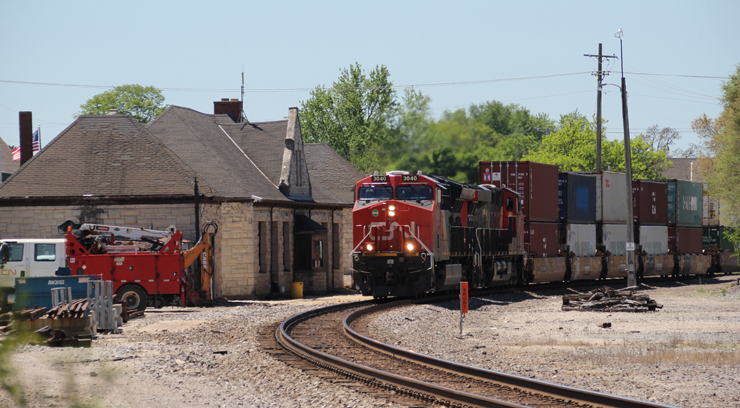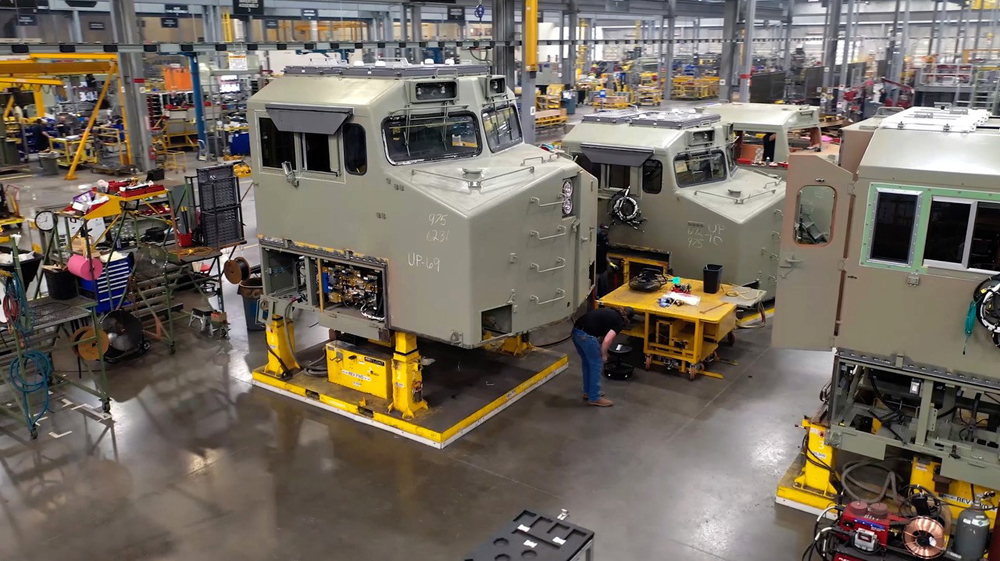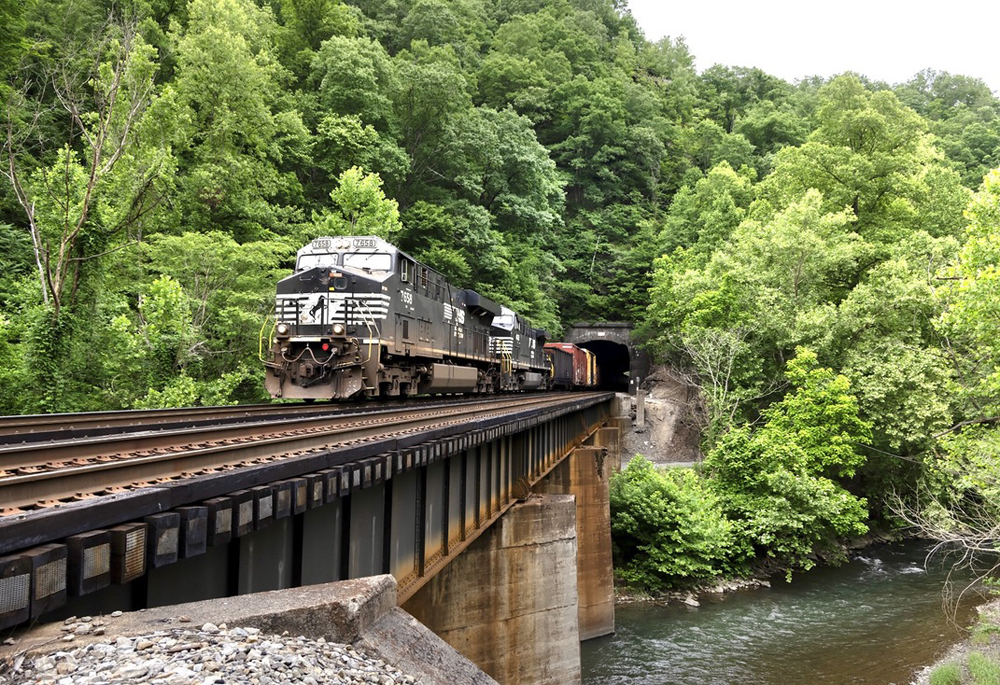HOMEWOOD, Ill. — Canadian National has met installation requirements for positive train control equipment and applied for a two-year extension to achieve complete PTC operability, the railroad announced Dec. 21.
The Federal Railroad Administration will grant such extensions for railroads that have installed all hardware, acquired the necessary radio spectrum, and initiated PTC on more than half of their required mileage. In a press release, CN said it had met these benchmarks by installing all its 1,662 radio towers, training all 5,614 employees required, installing hardware on all 586 locomotives and 35 required track segments, and initiated PTC on 19 of those track segments, or 54 percent.
The railroad is spending $1.4 billion on PTC installation on 3,100 route-miles in the U.S.















Ms. Harding: Your mentioning of the PTC frequencies bring up an issue that is overlooked by many people; international cooperation and coordination. Just as the railroads address PTC inter-operation across railroads, some railroads must make PTC operate across international boundaries. PTC (and all other) radio waves do not respect international boundaries. International radio band agreements beyond Canada and the US and radio propagation concerns must be considered as PTC operation and implementation is addressed. Changes to international agreements can take years to implement which may not meet the legislated dictates for PTC implementation.
For decades we have had devices sold that can adversely affect public safety. These are not limited to just radio transmitters. In the last week or so, reports of drones (new technology) violating the airspace around an airport and a reported aircraft strike disrupted holiday travel but fortunately did not cause any personal injury. How many grade crossing incidents between a vehicle (old technology) and a train occurred in the last two weeks? Both types of technology represent the challenge of having operators act responsibly to avoid a catastrophe.
The positive train control frequencies (selected by the AAR, apparently, although this needs to be fact-checked) is dead in the middle of the amateur radio 1.25 metre band. The section 220-222 MHz has been removed from amateur use by both the FCC and Industry Canada, and is now allocated to “land mobile user” (guess who) as the primary users, and for amateur use only for disaster relief efforts and that only on a secondary basis. So far, so good. There is a long history of carve-outs and reallocation of amateur bands so that in itself is nothing new.
What is of concern however is that this chunk of spectrum is directly in the middle of an otherwise active amateur radio band, and can be stepped on quite easily by amateurs who aren’t up on the latest regulations and restrictions on the 1.25 metre band. Store bought transceivers can and do radiate in this band, including the portion now allocated to PTC and therefore have the potential – a high potential – for interfering with PTC. Since PTC is a safety system such interference, or even the potential for interference, cannot be tolerated.
Three things immediately fall out of this argument. First, there exists an argument for taking the entirety of the 1.25 metre band out of amateur service (it is said to be lightly used in any event) altogether. Second, the balance of the 1.25 metre band – and make no mistake, this is valuable spectrum worth many millions of dollars to industry – can quite profitably be reallocated by both the FCC and Industry Canada. Finally, because PTC is a safety system affecting primarily passenger rail, and because of the ease with which an interfering signal can be generated, it should be unlawful to possess any device capable of transmitting on the 1.25 metre band, except for a corporate or other industrial, licenced, user.
There are those who maintain that amateur radio is a hobby whose day has come and gone, but that is an argument for another time and another place. The present arena is for railroad related topics.
The above comments are general in nature and do not form the basis for an attorney/client relationship. They do not constitute legal advice. I am not your attorney. Find your own damn lawyer.